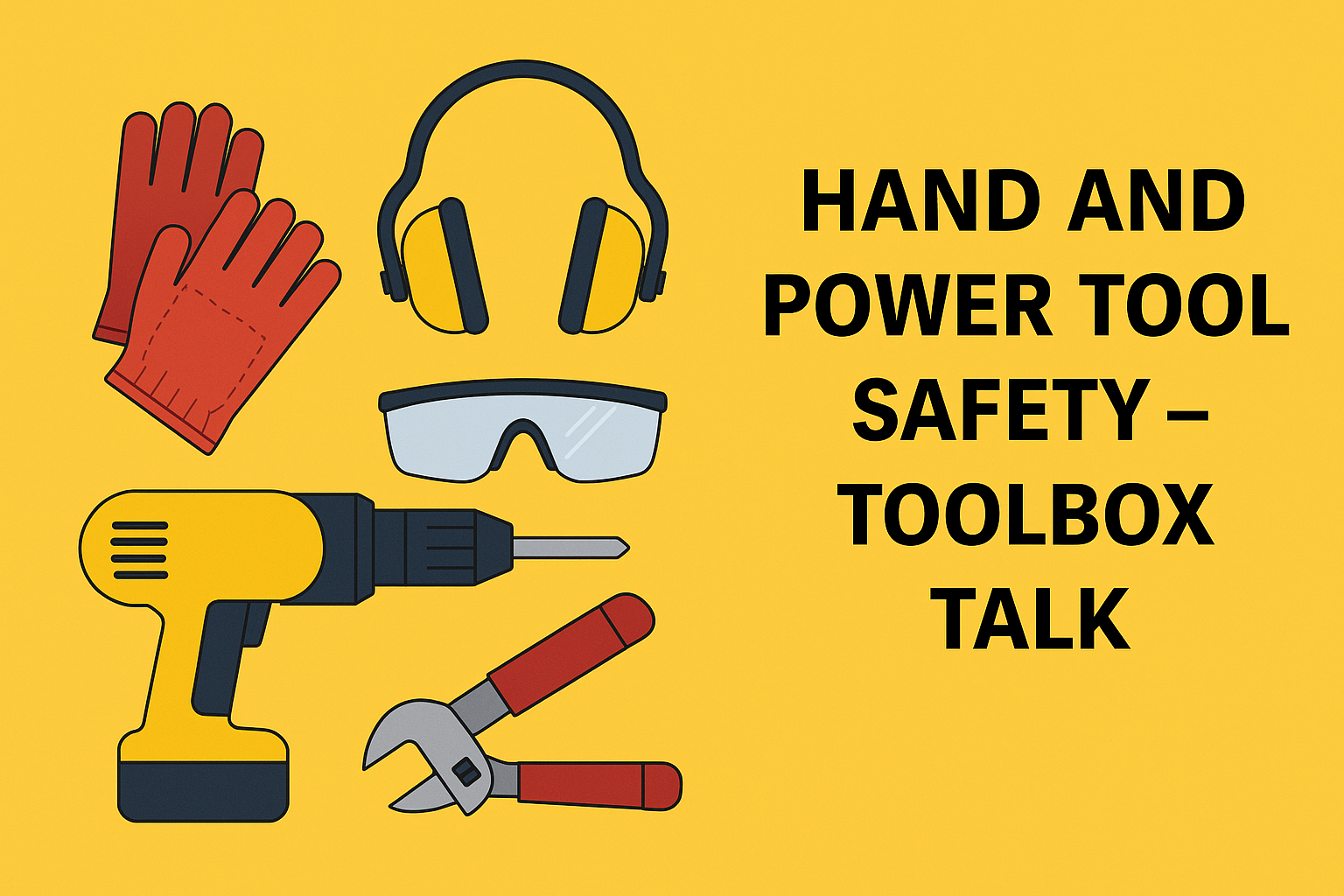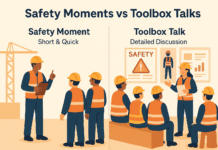
Hand and Power Tool Safety TBT
Good morning team,
Today’s talk is about Hand and Power Tool Safety — something we use almost every single day on site, often without thinking about the risks.
Hand and power tools make our jobs faster and easier, but they also present hazards like cuts, punctures, electric shock, flying debris, and even amputations if used improperly.
Every year, thousands of workers are injured by tools that were used incorrectly, poorly maintained, or in the wrong environment. We’re going to make sure we don’t become part of those statistics.
1. Why Tool Safety Matters
- Hand tools can cause repetitive strain injuries, cuts, and eye injuries.
- Power tools can cause severe lacerations, amputations, burns, and electric shock.
- Flying debris from tools can injure both the operator and nearby workers.
- Proper training and maintenance reduce risks significantly.
2. Common Hazards
2.1 Hand Tools
- Chisels with mushroomed heads.
- Wrenches with worn jaws slipping off bolts.
- Screwdrivers with damaged tips.
- Hammers with loose heads.
2.2 Power Tools
- Electric shock from damaged cords or plugs.
- Cuts and amputations from saws and grinders.
- Noise-induced hearing loss.
- Eye injuries from flying particles.
3. Safe Use of Hand Tools
- Keep tools clean and in good condition.
- Use the right tool for the job — don’t improvise.
- Replace damaged tools immediately.
- Store tools properly when not in use.
- Wear PPE like gloves and safety glasses.
4. Safe Use of Power Tools
- Inspect before each use: check cords, plugs, guards, and switches.
- Never remove safety guards.
- Disconnect from power before changing blades or bits.
- Use both hands for better control when required.
- Keep bystanders away from work areas.
5. Electrical Safety for Power Tools
- Use Ground Fault Circuit Interrupters (GFCIs) for outdoor or wet-area work.
- Never yank cords to unplug.
- Keep cords away from heat, oil, and sharp edges.
- Avoid using tools in wet conditions unless rated for it.
6. Pneumatic Tools
- Secure hoses to prevent whipping if a connection fails.
- Use the correct air pressure.
- Wear hearing protection and eye protection.
- Never point air tools at yourself or others.
7. PPE for Tool Work
- Safety glasses or face shields.
- Gloves suitable for the task.
- Hearing protection for noisy tools.
- Dust masks or respirators if generating dust.
- Steel-toe boots for heavy tool handling.
8. Do’s and Don’ts
✅ Do:
- Follow manufacturer instructions.
- Keep cutting edges sharp for safer work.
- Maintain a stable stance when using tools.
- Report defective tools.
❌ Don’t:
- Carry tools in your pockets.
- Use damaged cords or frayed cables.
- Remove guards or disable safety features.
- Leave tools running unattended.
9. Real-Life Case Study
A worker using an angle grinder without a guard lost control when the wheel shattered. The fragments caused deep cuts to his face and hands. He was wearing safety glasses, but no face shield. The grinder was also missing the side handle, reducing control.
Lesson: Always use guards, wear full PPE, and ensure tools are complete and in good condition.
10. Worker Engagement – Q&A
- What should you check before using a power tool?
- Why is it important to keep hand tool edges sharp?
- What is the safest way to unplug an electric tool?
11. Closing Words – Bringing It Back to the Start
Alright team, we began this morning talking about how we use tools daily without thinking. That’s exactly why we need to be conscious about safety — familiarity breeds carelessness.
The basics never change:
- Inspect before use.
- Use the right tool for the job.
- Wear the right PPE.
- Never bypass safety features.
Safe tools mean safe work. Let’s keep ours in top condition and use them the right way every time.
Stay alert, stay safe, and let’s have a productive day.
























